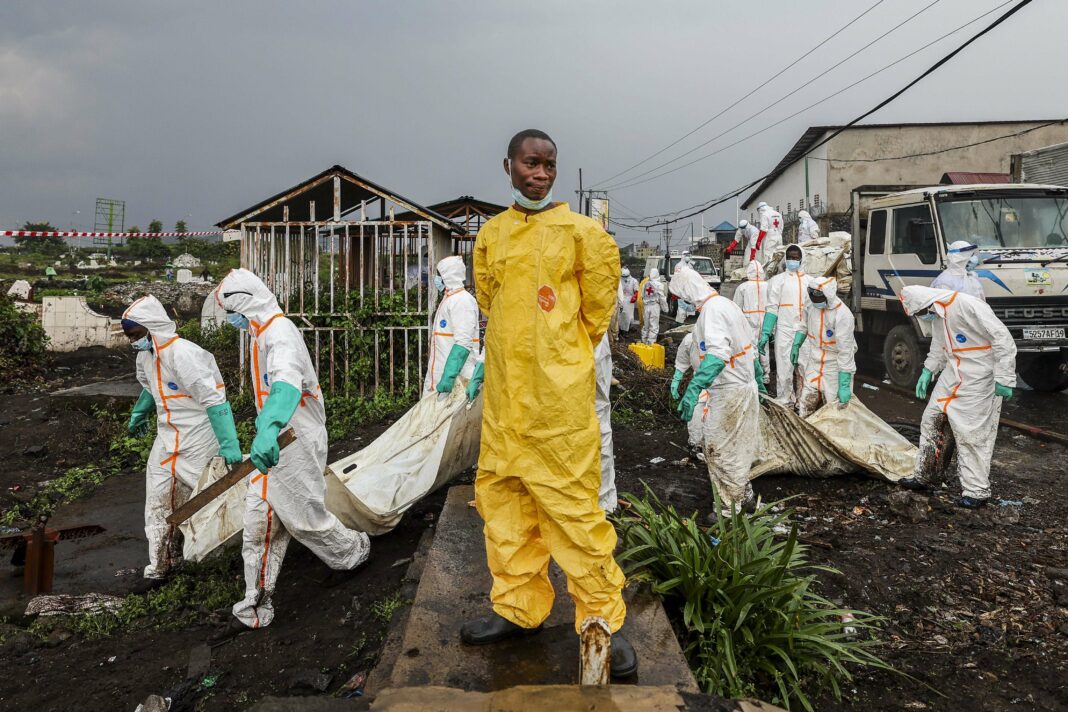Paul Kagame, Rwanda’s president, acknowledged significant security threats from the Democratic Republic of Congo (DRC) during a CNN interview, amid rising tensions as the M23 rebel group, allegedly supported by Rwanda, seized Goma. The conflict’s roots trace back to the 1994 Rwandan genocide, leading to ongoing instability and resource exploitation in Eastern Congo. International response has been muted despite clear evidence of Rwanda’s military involvement, while diplomatic talks aim to address escalating tensions and potential ceasefires.
“I don’t know,” remarked Paul Kagame, the President of Rwanda, as he shook his head during a recent interview with CNN. The journalist had inquired about the presence of Rwandan troops in the neighboring Democratic Republic of Congo (DRC). The interviewer pressed, “But you are the supreme commander of the troops,” highlighting the gravity of the situation.
Kagame, who has been at the helm of Rwandan politics for three decades, replied, “There are many things I do not know. However, if you ask me whether there is a problem in Congo that threatens Rwanda’s security, I would say: 100 percent.” This statement seemed to hint at a veiled acknowledgment of a situation that has been well-documented—the potential for Rwanda to spark a significant conflict.
The Escalation of Conflict in the Region
At the end of January, the rebel group M23 seized control of Goma, the largest city in Eastern Congo, leading to the deaths of at least 900 people and injuries to thousands more. M23 stands out among the over 100 rebel factions in the area, bolstered by Rwandan support that includes heavy artillery. According to United Nations experts, up to 4,000 Rwandan soldiers are reportedly assisting these rebels on the ground in the DRC.
This takeover marks the most significant escalation in more than a decade within a conflict that has gone largely unnoticed but has claimed millions of lives and displaced countless individuals. Experts warn that a regional war could be on the horizon, threatening stability across numerous African nations.
Historical Context: The Aftermath of the Rwandan Genocide
The roots of this conflict can be traced back to the horrific genocide in Rwanda in 1994, during which nearly a million individuals were brutally murdered in just 100 days, predominantly from the Tutsi ethnic group. The chaos drove hundreds of thousands into neighboring DRC, including many perpetrators of the genocide, which only exacerbated the conflict. This led to the formation of Hutu and Tutsi militias, ultimately giving rise to the M23 group.
Kagame argues that the lawlessness in eastern Congo, where the government holds little power, poses a direct threat to Rwanda’s security. The FDLR (Democratic Forces for the Liberation of Rwanda), a prominent Hutu militia, aims to overthrow Kagame’s regime and has been implicated in the persecution of Tutsis in Congo. Kagame frames Rwanda’s actions as a matter of self-defense, given the FDLR’s alleged collaboration with the Congolese army.
While the FDLR remains a concern, it is considerably weaker than it was two decades ago, and Rwanda’s military ranks among the most formidable in Africa. The Rwandan government’s focus appears to extend beyond mere security, delving into geopolitical interests and economic gain.
The Quest for Resources: Gold, Tin, and Coltan
The M23, along with Rwandan support, now controls an area in Eastern Congo that is twice the size of Rwanda, rich in fertile land and valuable resources such as gold, tin, copper, and coltan. This region has become a focal point for Rwanda’s ambitions. The M23 has recently captured Rubaya, home to one of the world’s most lucrative coltan mines, essential for manufacturing smartphones and laptops. Smuggling operations route Congolese gold and coltan into Rwanda, allowing these resources to enter the global market, with reports suggesting that over 150 tons of coltan have been illegally exported from DRC through Rwanda, generating substantial income for the M23.
In response to these activities, the Congolese government has raised alarms, filing lawsuits in France and Belgium against suppliers allegedly involved in the trafficking of smuggled minerals.
Despite the clear evidence of Rwanda’s military involvement and economic exploitation in Eastern Congo, international criticism has been notably subdued, particularly from Western nations. This was evident during the Goma takeover, which echoed a similar event in 2012 when the M23 briefly occupied the city, leading to a suspension of $240 million in development aid by Western countries.
This time, however, the response was far less severe. Rwanda has emerged as a crucial ally for Western nations, engaging in various military operations across Africa, including efforts against Islamist rebels in Mozambique. The EU has even provided financial support to Rwanda’s military, emphasizing its strategic importance on the continent.
The Future: Ceasefires and Diplomatic Efforts
As tensions continue, the M23 has declared a unilateral ceasefire, stating that they will refrain from further territorial gains for the time being. Upcoming diplomatic discussions are scheduled to take place in Dar es Salaam, involving Kagame and Congolese President Félix Tshisekedi, which may provide an opportunity to de-escalate the situation.
While there is hope for peace, many analysts doubt that Rwanda will retreat from its ambitions in Eastern Congo. Kagame has articulated the need for Rwanda to weather any challenges it faces, suggesting a strong determination to maintain influence over the region. The complex interplay of historical grievances, security concerns, and resource control will shape the future of Rwanda and its neighbors.
